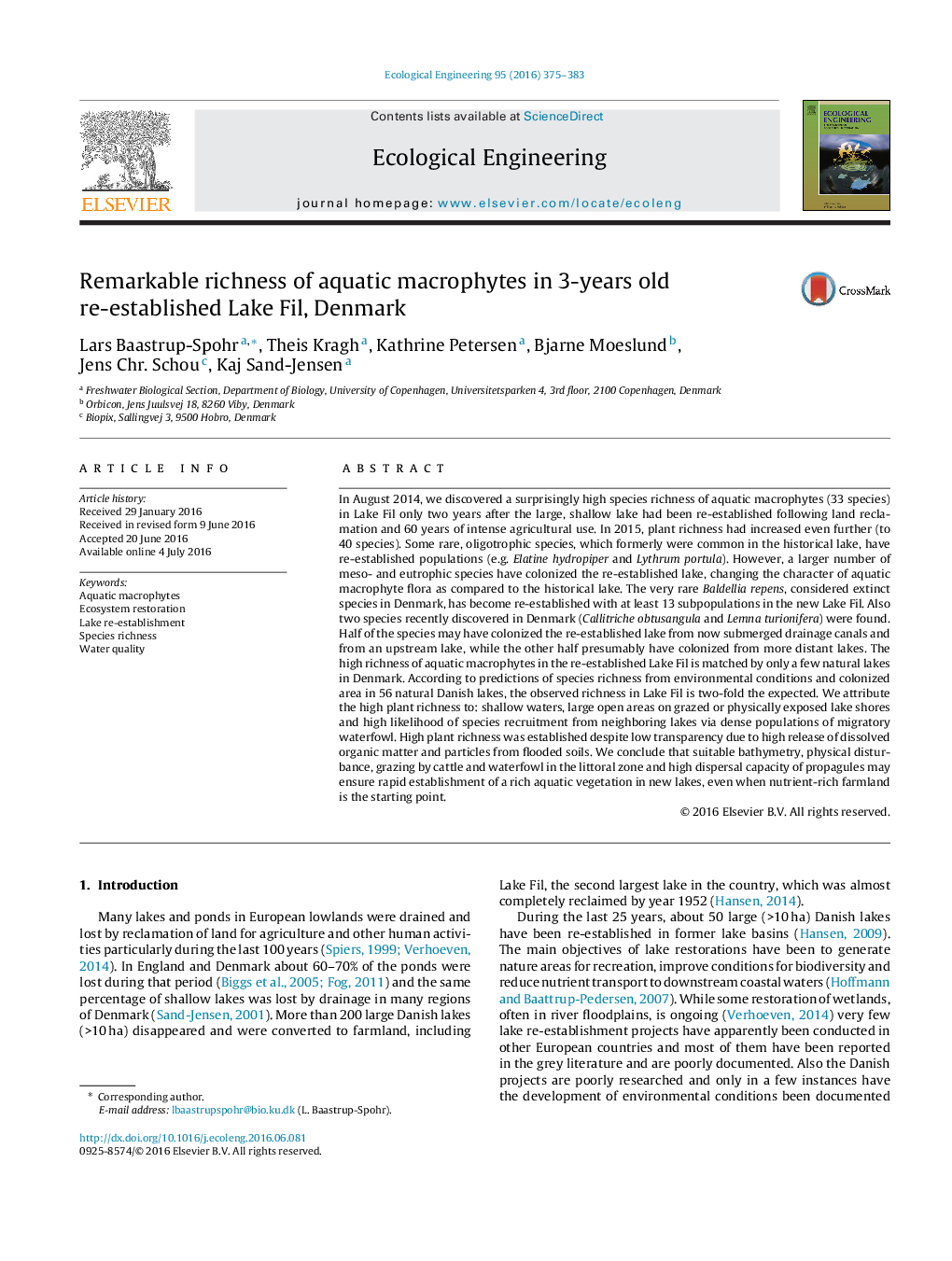| Article ID | Journal | Published Year | Pages | File Type |
|---|---|---|---|---|
| 4388462 | Ecological Engineering | 2016 | 9 Pages |
In August 2014, we discovered a surprisingly high species richness of aquatic macrophytes (33 species) in Lake Fil only two years after the large, shallow lake had been re-established following land reclamation and 60 years of intense agricultural use. In 2015, plant richness had increased even further (to 40 species). Some rare, oligotrophic species, which formerly were common in the historical lake, have re-established populations (e.g. Elatine hydropiper and Lythrum portula). However, a larger number of meso- and eutrophic species have colonized the re-established lake, changing the character of aquatic macrophyte flora as compared to the historical lake. The very rare Baldellia repens, considered extinct species in Denmark, has become re-established with at least 13 subpopulations in the new Lake Fil. Also two species recently discovered in Denmark (Callitriche obtusangula and Lemna turionifera) were found. Half of the species may have colonized the re-established lake from now submerged drainage canals and from an upstream lake, while the other half presumably have colonized from more distant lakes. The high richness of aquatic macrophytes in the re-established Lake Fil is matched by only a few natural lakes in Denmark. According to predictions of species richness from environmental conditions and colonized area in 56 natural Danish lakes, the observed richness in Lake Fil is two-fold the expected. We attribute the high plant richness to: shallow waters, large open areas on grazed or physically exposed lake shores and high likelihood of species recruitment from neighboring lakes via dense populations of migratory waterfowl. High plant richness was established despite low transparency due to high release of dissolved organic matter and particles from flooded soils. We conclude that suitable bathymetry, physical disturbance, grazing by cattle and waterfowl in the littoral zone and high dispersal capacity of propagules may ensure rapid establishment of a rich aquatic vegetation in new lakes, even when nutrient-rich farmland is the starting point.
